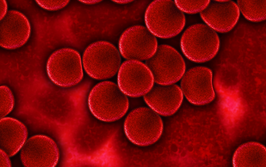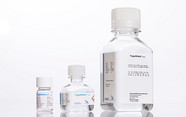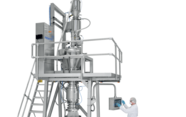Three Trends to Watch in Oral Solid Dosages
Oral solid dosages remain the world’s most popular dosage form, but their increasing complexity brings challenges.
Jennifer Gattari | | 4 min read | Opinion

The oral solid dosage (OSD) format remains a cornerstone of modern medicine, offering ease of administration for patients and cost-effective manufacturing for developers.
However, the OSD development and manufacturing landscape is becoming increasingly complex, driven by the demand for more sophisticated therapies that are also patient-centric. Formulators are under pressure to think more carefully than ever before about the selection of excipients and APIs to create stable, effective and manufacturable dosage forms that can promote patient compliance. Meeting the rising demand for OSD products requires a deep understanding of these evolving trends as well as the expertise, experience and capabilities to navigate their unique challenges. To that end, here are three trends that I think developers should keep an eye on in 2025.
HPAPIs entering mainstream development
HPAPIs are at the forefront of addressing a number of diseases because of their significant biological activity at very low doses. The increasing prevalence of chronic diseases and a growing focus on precision therapies have fueled a surge in the development and use of HPAPIs.
Although these compounds offer advantages, including the potential to reduce dosing frequency, their manufacture is challenging. HPAPIs can be hazardous to people handling them, even in small amounts, requiring careful consideration as to how to protect operators. Additionally, even trace amounts of HPAPIs can affect other products or batches, compromising their safety and efficacy. As a result, manufacturers must ensure there are appropriate controls in place.
A multi-faceted approach is needed to address the challenges:
- Specialized equipment, closed systems and engineering controls, such as airlocks and room pressure controls, to help contain HPAPIs and prevent exposure.
- Appropriate personal protective equipment and rigorous cleaning and decontamination procedures to minimize cross-contamination risks and protect operators and handlers.
- Comprehensive employee training programs and health surveillance initiatives to help ensure that personnel are well-equipped to handle HPAPIs safely and responsibly.
APIs with poor bioavailability
A growing challenge in OSD formulation is the rising prevalence of poorly soluble drugs. These drugs, often categorized as Class II or IV in the Biopharmaceutics Classification System, exhibit low solubility in water, hindering their dissolution and absorption in the gastrointestinal tract. This can significantly limit the API’s bioavailability, reducing its therapeutic effectiveness. As the number of poorly soluble drug candidates in the development pipeline increases, so does the need for innovative formulation techniques to enhance their bioavailability. To this end, various formulation strategies can be employed, including:
- Particle size reduction (milling). Reducing the particle size of the API increases its surface area, facilitating faster dissolution and absorption. Milling techniques, such as micronization or nanonization, can be used to achieve the desired particle size distribution.
- Amorphous solid dispersions (spray drying). Spray drying is a commonly used technique to create amorphous solid dispersions, where the drug is dispersed in a polymeric matrix. Converting the API from a crystalline to an amorphous form can significantly enhance its solubility and dissolution rate.
Choosing the most appropriate formulation technique depends on various factors, including the physicochemical properties of the API, the desired release profile, and the target product profile. Drug developers must carefully consider these factors and leverage advanced formulation technologies to overcome the challenges of poorly soluble drugs.
Increased demand for fixed-dose combinations
Fixed-dose combinations (FDCs) combine two or more APIs in a single dosage form. These formulations are gaining popularity in the OSD market because of their potential to improve patient adherence and enhance therapeutic outcomes. They can provide simpler treatment regimens, reduced tablet burden and increased efficacy through synergistic drug interactions. In fact, in a systematic review of 21 studies including information on 27,230 subjects, patients receiving FDCs showed better compliance and therapeutic effect compared with separate tablet regimens.
However, formulating FDCs presents challenges, including:
- Compatibility of APIs. Ensuring the different APIs are chemically and physically compatible within the same dosage form is crucial to avoid undesirable interactions or degradation.
- Stability. Maintaining the stability of all APIs in the FDC throughout its shelf life is essential to guarantee product quality and efficacy.
- Controlled release. Achieving the desired release profile for each API in the FDC can be complex, especially when different APIs have varying pharmacokinetic properties.
To overcome the inherent challenges of FDC formulation, developers must employ a multifaceted approach. This will involve carefully selecting excipients that support the stability and compatibility of all APIs while enabling the desired release profile. Formulators will also benefit from advanced manufacturing technologies such as wet granulation, dry granulation, blending and spray drying to control API properties and interactions within the FDC precisely.
Employing novel formulation approaches such as amorphous solid dispersions and multiple-unit particulate systems can further help to address specific formulation challenges, such as improving the solubility or modifying the release of individual APIs within the FDC.
The future of OSD formulation holds immense potential for delivering innovative and patient-centric therapies. However, realizing this potential requires developers to overcome the challenges presented by the evolving trends in the OSD landscape.
Global Business Development Lead at Pfizer CentreOne



















